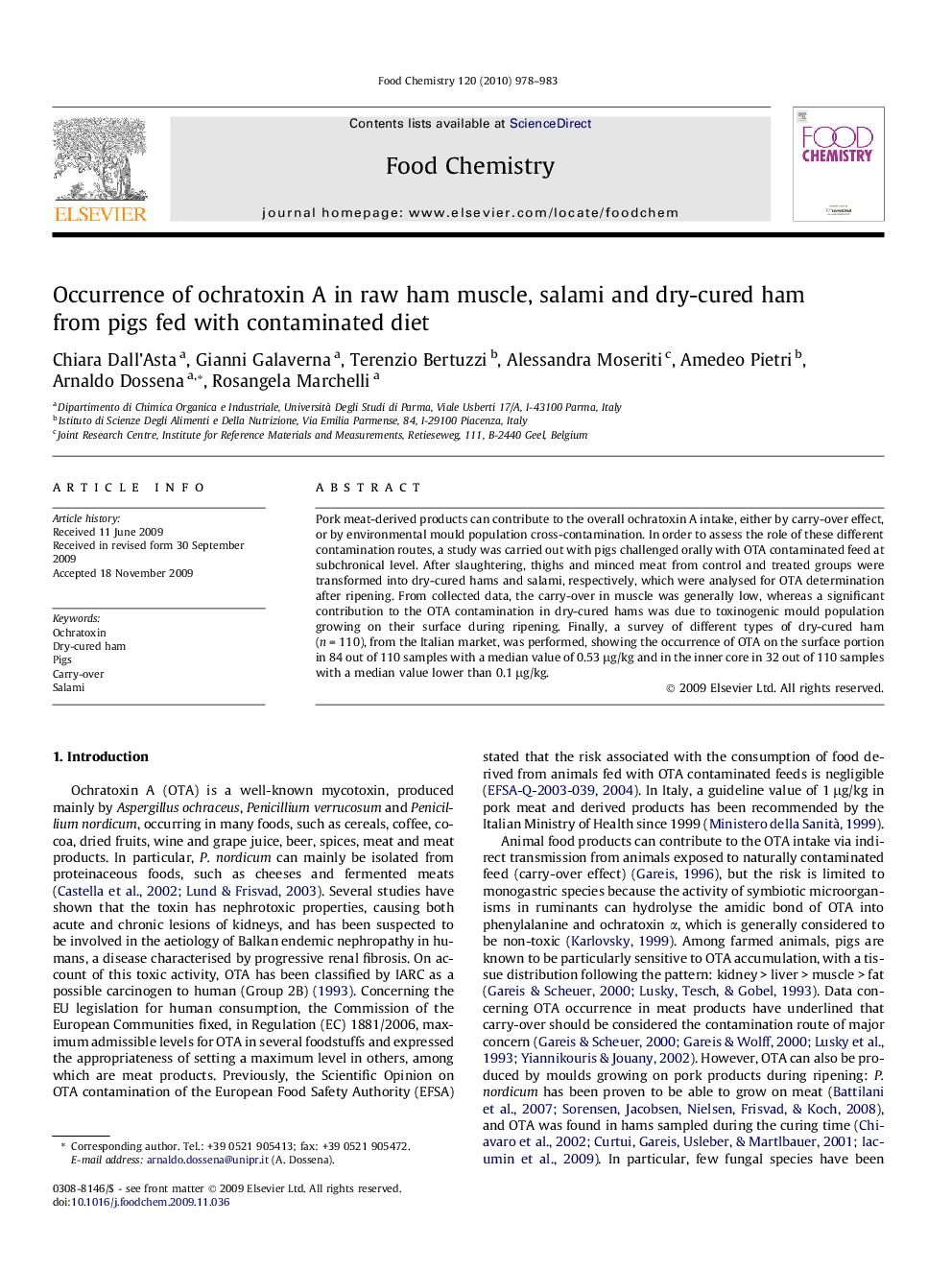| Article ID | Journal | Published Year | Pages | File Type |
|---|---|---|---|---|
| 1185355 | Food Chemistry | 2010 | 6 Pages |
Pork meat-derived products can contribute to the overall ochratoxin A intake, either by carry-over effect, or by environmental mould population cross-contamination. In order to assess the role of these different contamination routes, a study was carried out with pigs challenged orally with OTA contaminated feed at subchronical level. After slaughtering, thighs and minced meat from control and treated groups were transformed into dry-cured hams and salami, respectively, which were analysed for OTA determination after ripening. From collected data, the carry-over in muscle was generally low, whereas a significant contribution to the OTA contamination in dry-cured hams was due to toxinogenic mould population growing on their surface during ripening. Finally, a survey of different types of dry-cured ham (n = 110), from the Italian market, was performed, showing the occurrence of OTA on the surface portion in 84 out of 110 samples with a median value of 0.53 μg/kg and in the inner core in 32 out of 110 samples with a median value lower than 0.1 μg/kg.
